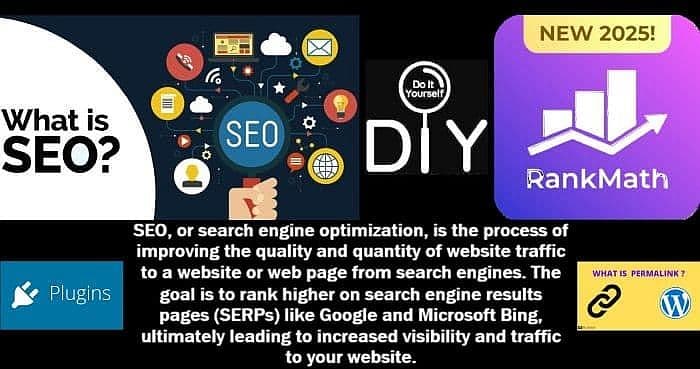
Those emails keep coming. “Improve your SEO!” they promise. “Boost your rankings!” But what exactly is SEO, and can you actually do it yourself without paying hundreds to some agency?
I decided to find out. After receiving the occasional SEO service pitch for my tech and politics blog, I turned to Claude AI to see if we could accomplish the same DIY SEO optimization results those services were promising. The answer turned out to be a resounding yes—with proper guidance.
What I Discovered About SEO Services
Search Engine Optimization sounds complicated, but it breaks down to making your website more visible to search engines like Google. Those email offers typically include keyword research, technical improvements, content optimization, and link building strategies. All legitimate services, but with price tags that made me wonder if there was a DIY approach.
Most paid SEO services charge anywhere from $500 to $2,000 monthly for what turned out to be tasks I could handle myself with the right tools and guidance. The key was understanding that SEO isn’t magic—it’s a systematic process of optimization.
The Technical Foundation: Permalinks and Plugins
My first discovery was that my blog had a fundamental problem. URLs were displaying as site.com/index.php/2023/09/29/post-name/ instead of the clean site.com/post-name/ format that search engines prefer. This permalink structure fix took exactly five minutes in WordPress settings but had site-wide SEO implications.
Next came choosing the right SEO plugin. After years of using All In One SEO Pack, I switched to RankMath‘s free version with Claude’s guidance. As a novice at technical blog management, I couldn’t have navigated the transition alone. The setup wizard walked through everything from site info to XML sitemaps, but having AI assistance made the difference between confusion and confidence.
The plugin transition revealed something important: many DIY SEO optimization improvements don’t require ongoing monthly payments. They’re one-time configuration changes that continue working indefinitely—if you know what you’re doing or have the right guidance.
The Optimization Process That Actually Works
RankMath introduced me to focus keyword optimization, something I’d been doing haphazardly before. The process became systematic:
Choose a focus keyword based on how people actually search for your topic. For a post about Grok and WordPress formatting issues, the focus keyword became “Grok WordPress formatting” rather than something vague like “AI writing tools.”
The plugin then identifies specific errors: missing meta descriptions, keywords not in titles, poor URL structure, and missing keyword placement in content. Each fix is straightforward and measurable.
My first DIY SEO optimization attempt boosted a post from a 16/100 AIOSEO score to a 67/100 RankMath SEO score. The second post jumped from 8/100 to 66/100—both now at solid scores. These aren’t minor improvements—they represent the difference between invisible and discoverable content.
Focus Keywords: The Foundation of SEO Success
Understanding focus keyword selection proved crucial. Instead of guessing what might work, I learned to think like my readers. What would someone type into Google to find this content?
For technical posts, keywords like “install LibreOffice Porteus Linux” work better than generic terms like “Linux tutorial.” For political commentary, “NYC mayor election 2025” targets actual searches rather than vague phrases like “political analysis.”
The keyword needs to appear naturally in your title, URL, meta description, and content. Not stuffed awkwardly, but integrated where it makes sense. RankMath tracks this automatically and shows exactly what’s missing.
Results That Speak for Themselves
Two optimized posts, roughly 30 minutes of work each with AI guidance, and measurable improvements in SEO scores. More importantly, I now understand the DIY SEO optimization process well enough to continue learning and gradually improve older posts.
The technical changes—permalink fixes and plugin installation—benefit the entire site immediately. Individual post optimizations compound over time as search engines index the improvements.
This is Part 1 of my SEO journey. The real test comes in 1-2 months when we’ll see if these optimizations translate into actual search traffic increases. But the foundation is solid, and the learning process has been surprisingly manageable with proper AI assistance.
Why This Matters for Self-Hosted Bloggers
If you’re running a self-hosted WordPress blog, you have complete control over these DIY SEO optimization improvements. You don’t need to wait for platform limitations or pay for basic SEO functionality that should be standard.
The tools exist, most of them free, to handle SEO optimization yourself. RankMath’s free version provides more functionality than many paid alternatives. The knowledge gap isn’t technical complexity—it’s understanding what actually matters for search engine visibility.
As a basic small blogger still learning the technical aspects, I’ve found that AI assistance bridges the expertise gap effectively. What seemed intimidating becomes manageable when you have step-by-step guidance from someone (or something) that understands both the technical requirements and how to explain them clearly.
Those occasional SEO service emails aren’t necessarily scams, but they’re selling something you can learn to do effectively yourself with the right guidance. The systematic approach, the right tools, and some patience with the learning process deliver results that match what agencies provide at a fraction of the cost.
For bloggers serious about growing their audience through search traffic, understanding DIY SEO optimization fundamentals isn’t optional anymore. The good news is that it’s more accessible than the marketing emails make it seem—especially when you have AI assistance to guide the process.
A DIY SEO Optimization Tip Shared
Did you catch it? There’s a quiet strategy woven into this post: the deliberate use of “DIY SEO optimization” as my focus words. Tucked into the title and laced naturally throughout, these words aren’t just a theme—they’re a purposeful step to boost discoverability. That’s the essence of DIY SEO optimization—crafting content with intention, letting every word shine for readers like you. Will it bear fruit? Join me for Part 2 in a month or two to see how it unfolds!
